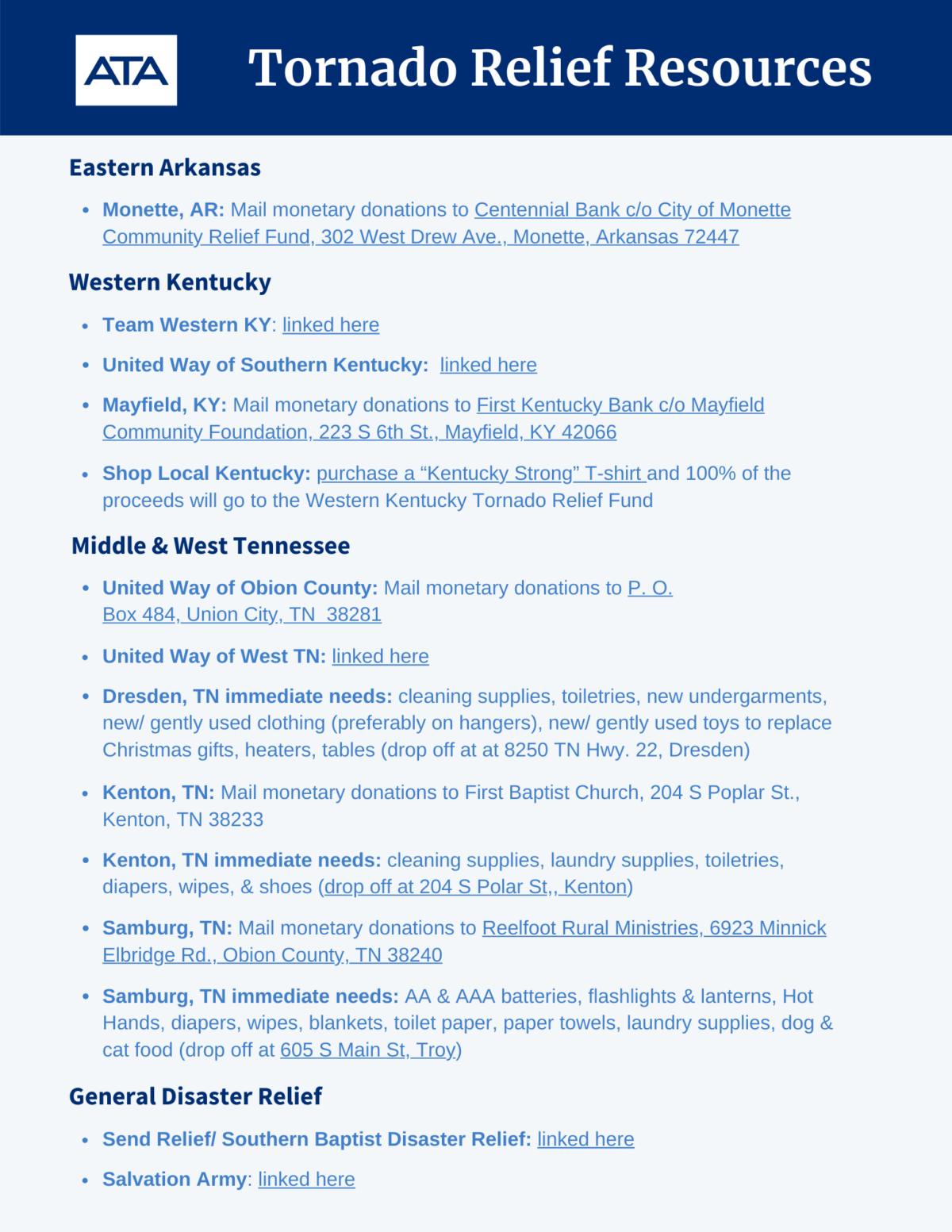Eastern Arkansas
Monette, AR: Mail monetary donations to Centennial Bank c/o City of Monette Community Relief Fund, 302 West Drew Ave., Monette, Arkansas 72447
Western Kentucky
United Way of Southern Kentucky
Mayfield, KY: Mail monetary donations to First Kentucky Bank c/o Mayfield Community Foundation, 223 S 6th St., Mayfield, KY 42066
Shop Local Kentucky: purchase a “Kentucky Strong” T-shirt and 100% of the proceeds will go to the Western Kentucky Tornado Relief Fund
Middle & West Tennessee
United Way of West TN
United Way of Obion County: Mail monetary donations to P. O. Box 484, Union City, TN 38281
Samburg, TN: Mail monetary donations to Reelfoot Rural Ministries, 6923 Minnick Elbridge Rd., Obion County, TN 38240
Samburg, TN immediate needs: AA & AAA batteries, flashlights & lanterns, Hot Hands, diapers, wipes, blankets, toilet paper, paper towels, laundry supplies, dog & cat food (drop off at 605 S Main St, Troy)
Dresden, TN immediate needs: cleaning supplies, toiletries, new undergarments, new/ gently used clothing (preferably on hangers), new/ gently used toys to replace Christmas gifts, heaters, tables (drop off at at 8250 TN Hwy. 22, Dresden)
Kenton, TN: Mail monetary donations to First Baptist Church, 204 S Poplar St., Kenton, TN 38233
Kenton, TN immediate needs: cleaning supplies, laundry supplies, toiletries, diapers, wipes, & shoes (drop off at 204 S Polar St., Kenton)
General Disaster Relief
Send Relief/ Southern Baptist Disaster Relief


